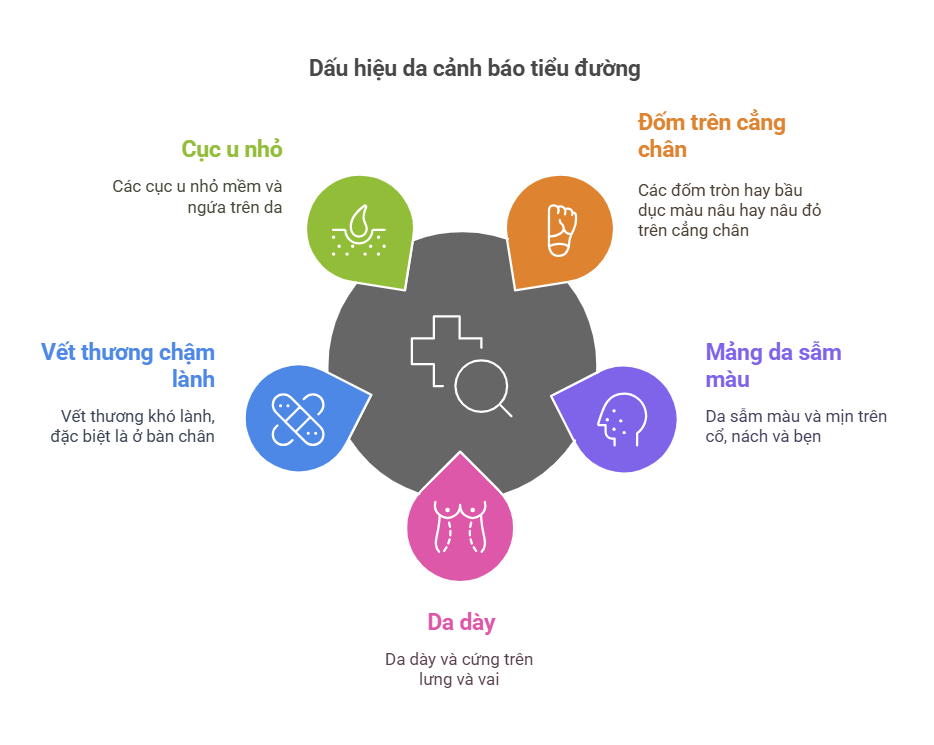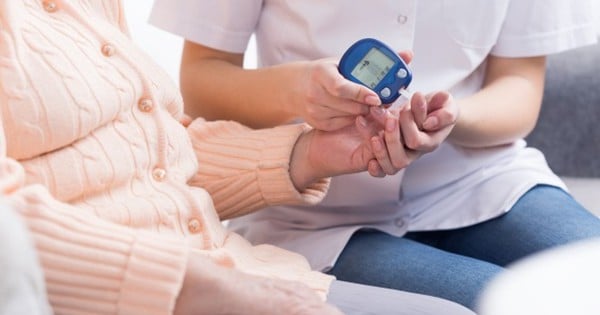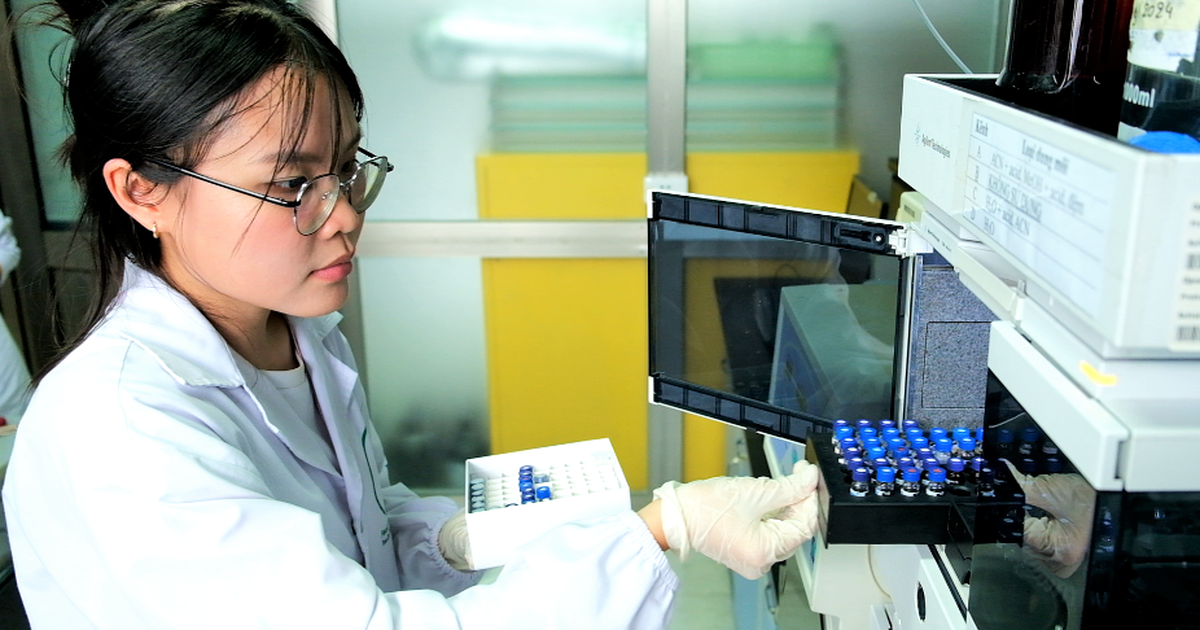Diabetes is a complex disorder that affects many different parts of the body, including the skin. Long-term high blood sugar levels can lead to a number of skin abnormalities.
These abnormalities can be signs of diabetes. At that time, the patient needs to see a doctor for diagnosis and treatment, thereby preventing complications, according to the health website Medical News Today (USA).

Slow wound healing is a common sign of diabetes.
The following signs on the skin can be a warning of diabetes.
Spots on the shins
People with diabetes often have spots on their legs. This condition is called diabetic dermopathy. People with diabetes develop round or oval brown or reddish-brown spots, usually on their lower legs. These spots are harmless but are a warning sign that diabetes needs to be checked.
Darker patches of skin
Another warning sign of diabetes is the appearance of dark, smooth patches or bands of skin. The most common locations are on the neck, armpits and groin. This condition is called acanthosis nigricans and is considered one of the first signs of diabetes.
Thick and hard skin
People with diabetes also have a problem with thickening and hardening of the skin in certain areas of the body. These hard, thick patches of skin are painless and usually appear on the upper back, shoulders, and neck, but not on the arms or legs.

Slow wound healing
Long-term high blood sugar can reduce blood circulation and cause nerve damage. This can make it difficult for skin wounds to heal, especially on the feet. This condition is also known as diabetic ulcers and is considered a serious complication that can lead to amputation.
Small lumps on the skin
Uncontrolled diabetes can cause high levels of triglycerides in the blood. Triglycerides play an important role in storing and providing energy for the body. However, if triglyceride levels get too high, they can cause serious health problems.
High triglyceride levels can manifest as small bumps on the skin, commonly known as eruptive xanthomas. These bumps typically appear on the buttocks, thighs, elbows, and even knees. They are often tender and itchy. When diabetes is well controlled, the bumps may disappear, according to Medical News Today .
Source: https://thanhnien.vn/5-dau-hieu-tieu-duong-bieu-hien-tren-da-185250303155453882.htm




![[Photo] April Festival in Can Tho City](https://vstatic.vietnam.vn/vietnam/resource/IMAGE/2025/4/10/bf5ae82870e648fabfbcc93a25b481ea)
![[Photo] Unique folk games at Chuong Village Festival](https://vstatic.vietnam.vn/vietnam/resource/IMAGE/2025/4/10/cff805a06fdd443b9474c017f98075a4)
![[Photo] Opening of the 11th Conference of the 13th Party Central Committee](https://vstatic.vietnam.vn/vietnam/resource/IMAGE/2025/4/10/f9e717b67de343d7b687cb419c0829a2)























































































Comment (0)